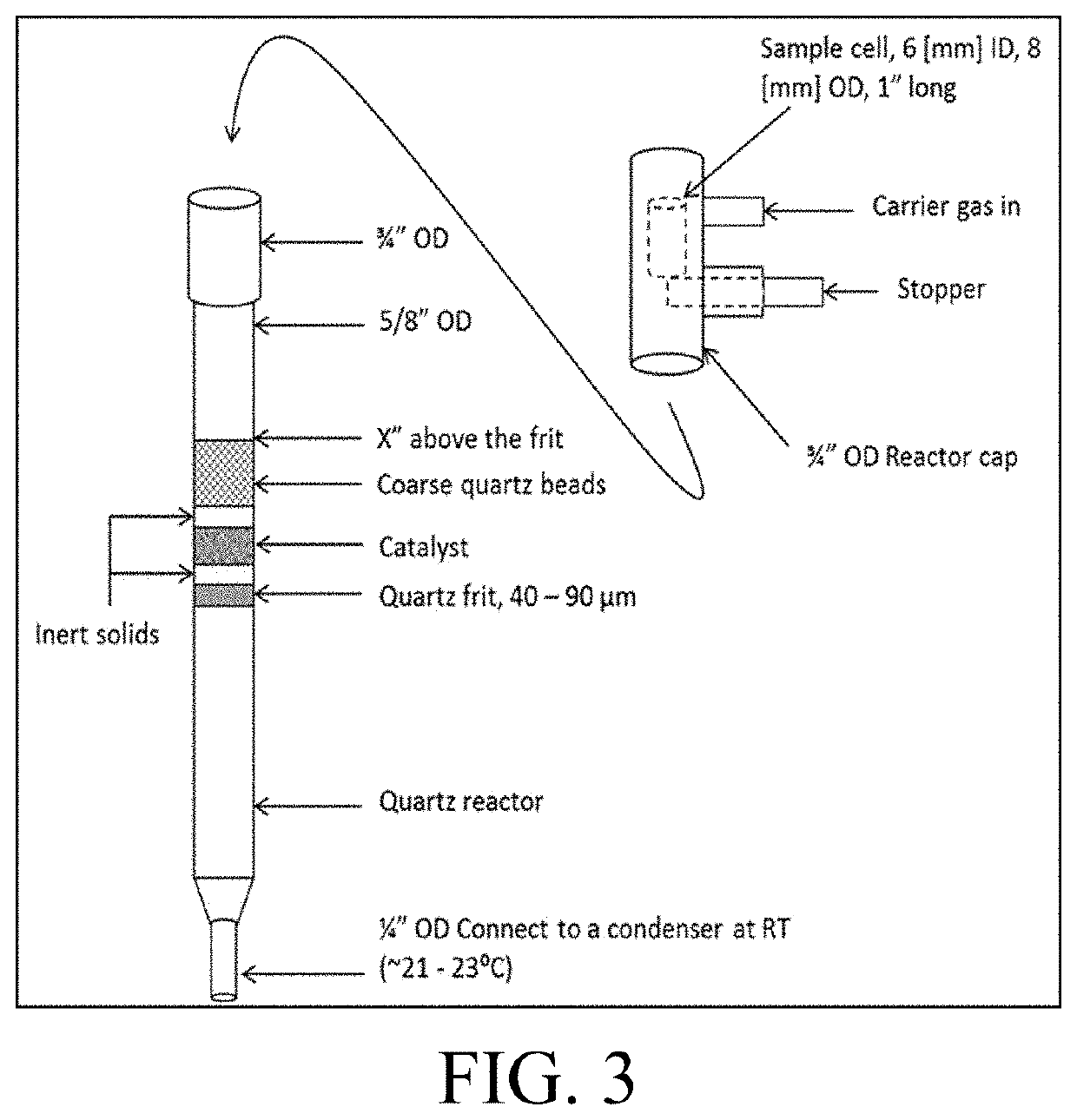Two step process for chemically recycling plastic waste
a technology of chemical recycling and plastic waste, applied in the direction of catalyst regeneration/reactivation, hydrocarbon oil treatment products, physical/chemical process catalysts, etc., can solve the problems of plastic recycling challenges, the us recycling rate is estimated to have dropped to only 4.4%, etc., and achieve the effect of simple feeding system
- Summary
- Abstract
- Description
- Claims
- Application Information
AI Technical Summary
Benefits of technology
Problems solved by technology
Method used
Image
Examples
examples 1 through 10
[0059]The drop-tube reactor for two-step chemical conversion of plastics comprises a quartz reactor tube (ACE Glass) containing a quartz frit (40-90 μm) fused into the center of the tube. FIG. 3 shows the configuration of the drop-tube reactor. A sample cell (10 mm OD, 8 mm ID, 25 mm length, quartz, made by TGP) is used to contain the feedstock using two pieces of quartz wool (TGP). As illustrated in FIG. 3, the sample cell was placed in a reactor cap (borosilicate, ACE Glass) and was held by a stopper (¼ inch (6 mm) aluminum rod, McMaster). The reactor cap and the quartz reactor were then assembled and installed onto the fixed-bed reactor system. The bottom of the reactor was connected to a condenser (borosilicate) filled with perforated stainless steel packing (ACE Glass) immersed in an ice-water bath (0° C.). A heating mantle was applied between the reactor bottom and the condenser top to prevent any condensation before the condenser. During the reaction, the heating mantle was s...
PUM
| Property | Measurement | Unit |
|---|---|---|
| temperature | aaaaa | aaaaa |
| temperature | aaaaa | aaaaa |
| temperatures | aaaaa | aaaaa |
Abstract
Description
Claims
Application Information
 Login to View More
Login to View More - R&D
- Intellectual Property
- Life Sciences
- Materials
- Tech Scout
- Unparalleled Data Quality
- Higher Quality Content
- 60% Fewer Hallucinations
Browse by: Latest US Patents, China's latest patents, Technical Efficacy Thesaurus, Application Domain, Technology Topic, Popular Technical Reports.
© 2025 PatSnap. All rights reserved.Legal|Privacy policy|Modern Slavery Act Transparency Statement|Sitemap|About US| Contact US: help@patsnap.com


